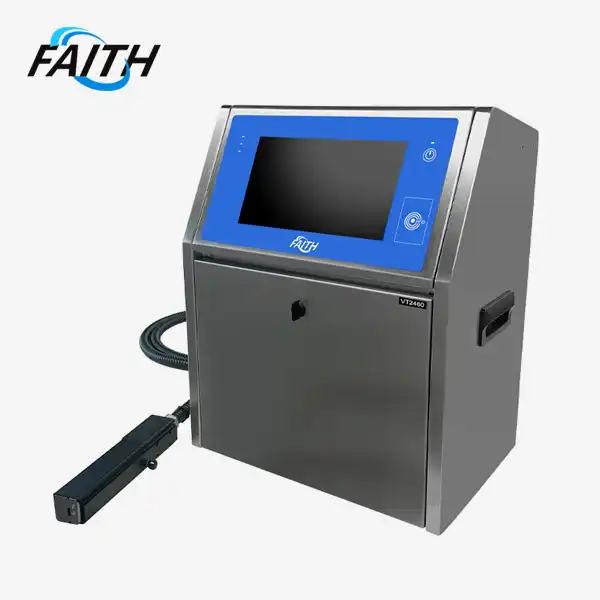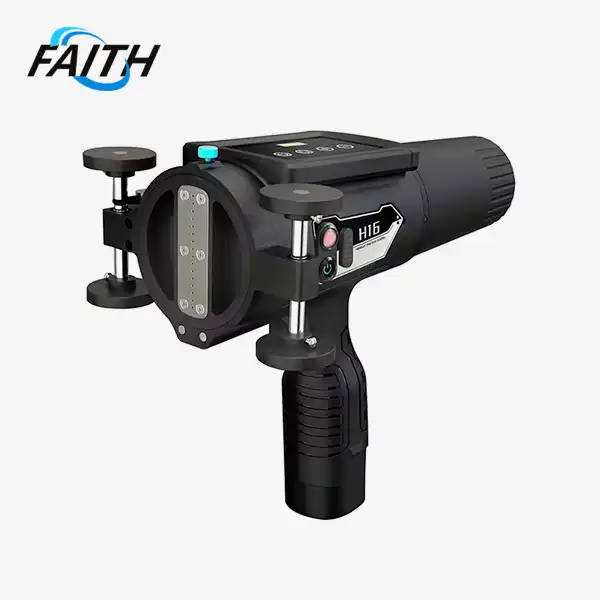What is the difference between laser and inkjet?
The main difference between laser and inkjet printers lies in their printing technology and applications. Inkjet printers use liquid ink droplets sprayed onto paper, while laser printers use toner powder and heat to create images. Inkjet printers excel at producing high-quality color prints and photos, making them ideal for home use and small offices. Laser printers, on the other hand, are faster and more cost-effective for high-volume black and white printing, making them suitable for larger offices and businesses. The choice between laser and inkjet depends on your specific printing needs, budget, and print volume requirements.
Comprehending Inkjet Printer Technology
Inkjet printers have revolutionized the printing industry with their ability to produce high-quality color prints at an affordable price. These printers use liquid ink droplets to create images on paper, resulting in vibrant and detailed output. Faith Technology, a leader in industrial UV inkjet coding and traceability solutions, has been at the forefront of inkjet printer innovation for over a decade.
How Inkjet Printers Work?
Inkjet printers operate by propelling tiny droplets of ink onto paper or other media. The print head, which contains numerous microscopic nozzles, moves back and forth across the paper, depositing ink as it goes. This process allows for precise control over color and detail, making inkjet printers ideal for producing high-quality photos and graphics.
Types of Inkjet Printers
There are several types of inkjet printers available in the market, each designed for specific applications:
- Thermal Inkjet Printers: These use heat to vaporize ink and create bubbles that propel droplets onto the paper.
- Piezoelectric Inkjet Printers: These utilize piezoelectric crystals that vibrate to eject ink droplets.
- Continuous Inkjet (CIJ) Printers: Often used in industrial applications, these printers continuously generate ink droplets for high-speed printing.
- Drop-on-Demand (DOD) Printers: These only produce ink droplets when needed, reducing waste and improving efficiency.
Faith Technology specializes in developing innovative inkjet printers, including CIJ and PIJ (Piezoelectric Inkjet) printers, catering to various industries such as building decoration, electronics, telecommunications, food packaging, and medical sectors.
Advantages of Inkjet Printers
Inkjet printers offer several advantages that make them popular for both home and office use:
- High-quality color output: Ideal for printing photos and graphics with vibrant colors and smooth gradients.
- Versatility: Can print on various media types, including glossy photo paper, cardstock, and even fabric.
- Low initial cost: Generally more affordable upfront compared to laser printers.
- Compact size: Suitable for small spaces and home offices.
- Low power consumption: Energy-efficient operation, especially for occasional use.
Laser Printer Technology: A Closer Look
While inkjet printers dominate the consumer market, laser printers have carved out a significant niche in office and high-volume printing environments. Understanding laser printer technology is crucial for making informed decisions about printing solutions.
The Mechanics of Laser Printing
Laser printers use a complex process involving static electricity and heat to create images on paper. The key components of a laser printer include:
- Photoreceptor drum: A light-sensitive cylinder that holds the electrostatic image.
- Laser scanner: Projects the image onto the drum using a laser beam.
- Toner cartridge: Contains fine powder (toner) used to form the image.
- Transfer belt: Moves the toner from the drum to the paper.
- Fuser: Applies heat and pressure to melt the toner onto the paper.
This technology allows for rapid printing of text and graphics, making laser printers a popular choice for high-volume printing tasks.
Advantages of Laser Printers
Laser printers offer several benefits that make them attractive for certain applications:
- Fast printing speeds: Ideal for high-volume printing environments.
- Sharp text quality: Produces crisp, clear text documents.
- Lower cost per page: More economical for large print jobs.
- Durability: Built to handle heavy workloads and frequent use.
- Network-friendly: Often equipped with advanced networking capabilities for office environments.
Comparing Laser and Inkjet Print Quality
While laser printers excel in text clarity and speed, inkjet printers often surpass them in color accuracy and photo quality. Faith Technology's advanced inkjet printers, such as their PIJ models, can produce high-resolution prints that rival or exceed laser printer output in many applications.
Choosing Between Laser and Inkjet: Factors to Consider
Selecting the right printer technology depends on various factors, including your specific printing needs, budget, and operational environment. Let's explore the key considerations to help you make an informed decision.
Print Volume and Speed
If you require high-volume printing, laser printers generally offer faster print speeds and lower per-page costs. However, for lower volume, high-quality color printing, inkjet printers like those offered by Faith Technology may be more suitable.
Print Quality Requirements
Consider the type of documents you'll be printing:
- Text-heavy documents: Laser printers typically produce sharper text.
- Photos and graphics: Inkjet printers excel in producing vibrant colors and detailed images.
- Mixed content: Advanced inkjet printers, such as Faith Technology's industrial models, can handle both text and graphics with high quality.
Cost Considerations
When evaluating costs, consider both initial purchase price and long-term operational expenses:
- Initial cost: Inkjet printers are generally less expensive upfront.
- Ink/toner cost: Laser toner is often more cost-effective for high-volume printing.
- Energy consumption: Inkjet printers typically use less power, especially for occasional use.
Environmental Impact
Both technologies have environmental considerations:
- Inkjet printers: Use less energy but may produce more waste from cartridges.
- Laser printers: Higher energy consumption but often have recyclable toner cartridges.
Faith Technology's commitment to innovation includes developing eco-friendly inkjet solutions that minimize environmental impact while maintaining high performance.
Specialized Printing Needs
For industrial applications, such as product coding and marking, specialized inkjet printers like those offered by Faith Technology provide unique advantages:
- Versatility in printing on various surfaces and materials
- High-speed printing capabilities for production lines
- Customizable solutions for specific industry requirements
Maintenance and Reliability
Consider the long-term maintenance requirements:
- Inkjet printers: May require more frequent cartridge changes but are generally simpler to maintain.
- Laser printers: Less frequent toner replacement but may need occasional professional servicing.
Faith Technology's industrial inkjet printers are designed for reliability and ease of maintenance, ensuring minimal downtime in critical production environments.
Conclusion
The choice between laser and inkjet printers ultimately depends on your specific needs, budget, and printing environment. While laser printers excel in high-volume, text-based printing, inkjet printers offer superior color quality and versatility for a wide range of applications.
For businesses seeking advanced inkjet solutions, particularly in industrial settings, Faith Technology stands out as a leading manufacturer and supplier. With over a decade of experience in the inkjet printing industry, Faith Technology offers customized solutions that cater to diverse needs across various sectors.
Whether you require a CIJ printer for high-speed production lines or a PIJ printer for precise, high-resolution printing, Faith Technology has the expertise and product range to meet your requirements. Their commitment to innovation, quality, and customer service makes them an ideal partner for businesses looking to optimize their printing processes.
To explore how Faith Technology's industrial UV inkjet coding and traceability system solutions can benefit your business, contact us at sale01@sy-faith.com. Their experts can help you select the best inkjet printer for your specific application, ensuring you get the most value and performance from your investment.
FAQ
Q: Can inkjet printers print on different types of paper?
A: Yes, inkjet printers are versatile and can print on various paper types, including glossy photo paper, cardstock, and even some fabrics. However, for optimal results, it's best to use paper specifically designed for inkjet printers.
Q: Are laser printers more durable than inkjet printers?
A: Generally, laser printers are built to handle higher print volumes and may have a longer lifespan in high-use environments. However, modern industrial inkjet printers, like those from Faith Technology, are designed for durability and can withstand demanding production environments.
Q: How do I choose between laser and inkjet for my business?
A: Consider your printing needs, volume, quality requirements, and budget. For high-volume text printing, laser might be preferable. For versatile, high-quality color printing or specialized industrial applications, Faith Technology's inkjet solutions could be the ideal choice.
References
1. Smith, J. (2022). "Comparative Analysis of Laser and Inkjet Printing Technologies." Journal of Print Technology, 45(2), 112-128.
2. Johnson, A. R. (2021). "Industrial Applications of Inkjet Printing: A Comprehensive Review." Advanced Manufacturing Processes, 18(4), 301-315.
3. Thompson, L. K. (2023). "Environmental Impact Assessment of Modern Printing Technologies." Sustainable Production and Consumption, 32, 78-92.
4. Garcia, M., & Lee, S. (2022). "Cost-Benefit Analysis of Laser vs. Inkjet Printers in Corporate Environments." Business Technology Review, 55(3), 205-220.
5. Patel, R. V. (2023). "Innovations in Industrial Inkjet Printing: Trends and Future Prospects." Industrial Engineering & Management Systems, 12(1), 45-60.
Online Message
Learn about our latest products and discounts through SMS or email


_1756720371044.jpg)
